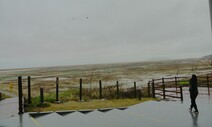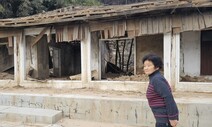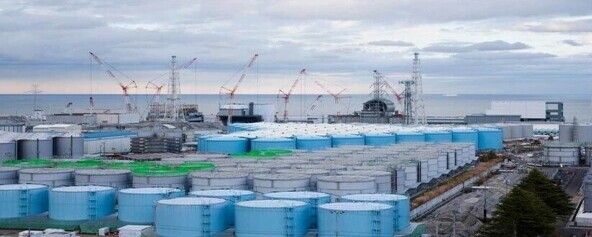
자연 재해는 인간의 환경 파괴와 뗄 수 없게 됐다. 지난해 7월 대홍수가 닥친 방글라데시의 수도 다카에서 어린이들이 물살을 헤치고 있다. 다카/AFP 연합
논구술Ⅰ영어로 생각하기 지난해 12월26일 남아시아를 강타한 쓰나미를 보면서 우리는 현실의 여러 측면들을 새롭게 되돌아볼 기회를 갖게 됐다. 산더미 같은 파도가 해안을 덮치는 현장이 텔레비전으로 전세계 안방에 생생하게 전달됐고, 인터넷은 시시각각 피해 상황 정보를 제공했다. 오늘날의 세계가 ‘지구촌’임을 실감할 수 있었다. 하지만 경쟁적으로 구호하는 과정에서 보인 ‘추한’ 모습은 여전히 국제 사회가 홉스의 <리바이어던>에서 제시된 상황을 벗어나지 못했음을 드러냈다. 특히 미국의 지원 규모와 대응 방식은 세계의 지도국가라는 명분을 살리기에는 턱없이 부족했다. 그러나 인류가 쓰나미를 지켜보며 얻은 가장 큰 교훈은 문명이 자연 앞에서 얼마나 왜소한지를 되돌아보고, 자연과 어울려는 방법을 배워야 한다는 걸 깨우치게 됐다는 점일 것이다. 세계화와 생태계 위기의 상호 관계를 다룬 글을 읽으며 함께 생각해 보자. [면접형] 다음 글을 읽고 물음에 답하시오. Until quite recently, human societies were threatened by external risk-dangers such as drought, earthquake, famines and storms that spring from the natural world and are unrelated to the actions of humans.ⓐ Today, however, we are increasingly confronted with various types of manufactured risk-risks that are created by the impact of our own knowledge and technology on the natural world. As we shall see, many environmental and health risks facing contemporary societies are instances of manufactured risk-they are the outcomes of our own interventions into nature.
One of the clearest illustrations of manufactured risk can be found in threats currently posed by the natural environment. One of the consequences of accelerating industrial and technological development has been the steady spread of human intervention into nature. There are few aspects of the natural world that remain untouched by man-urbanization, industrial production and pollution, large-scale agricultural projects, the construction of dams and hydroelectric plants, and nuclear power programmes are just some of the ways in which human beings have had an impact on their natural surroundings. The collective outcome of such processes has been the creation of widespread environmental destruction whose precise cause is indeterminate and whose consequences are similarly difficult to calculate. ⓑIn our globalizing world, ecological risk confronts us in many guises. Concern over global warming has been mounting in the scientific community for some years; it is now generally accepted that the earth’s temperature has been increase from the build-up of harmful gases within the atmosphere. The potential consequences of global warming are devastating:if polar ice caps continue to melt as they currently are, sea levels will rise and may threaten low-lying land masses and their human populations. Changes in climate patterns have been cited as possible causes of the severe floods that afflicted parts of China in 1998 and Mozambique in 2000.
|
1. 윗글을 읽고 1998년 중국과 2000년 모잠비크 여러 지대를 휩쓴 심각한 홍수의 원인을 설명하시오.
2. 밑줄 친 ⓐ 부분을 해석하시오.
3. 현재 우리나라에서 논의되고 있는 새만금 간척 사업은, 윗글에 따르면 어떤 결과를 초래하게 되는가?
4. 윗글에 따르면 현재와 같이 남극과 북극의 얼음이 녹는다면, 해수면이 높아질 것이고 저지대 대부분과 그곳에 사는 사람들을 위협할 것이라고 한다. 그렇다면 쓰나미로 피해를 입은 지역이 다시 한번 ‘제조된 위험’에 의해 위협받을 수도 있다. 이 문제를 해결할수 있는 구체적인 대안을 제시해 보라.
5. 밑줄 친 ⓑ부분의 내용을 구체적인 예를 들어 설명하시오.
|
||||
|
||||||
[지문 해석] ecological risk(생태계 위기) 최근까지 인간 사회는 자연 세계로부터 오고 인간의 행위와 관련되지 않은 가뭄·지진·기아·폭풍과 같은 외적인 위험에 의해 위협받았다. 그러나 오늘날 우리는 점차 자연계에 대한 우리의 지식과 기술의 효과에 의해서 만들어진 위험인 ‘제조된 위험’에 직면하고 있다. 우리가 알 수 있듯이, 현대 사회가 직면한 많은 환경과 건강의 위험은 제조된 위험의 보기들이다. 그것들은 인간이 자연에 개입한 결과물이다. 제조된 위험을 가장 명확하게 보여 주는 하나의 예는 현재 자연 환경에 의해 제기된 위협에서 찾을 수 있다. 가속화하는 산업 및 기술 발전의 하나의 결과는 지속적인 인간의 자연 개입이다. 인간의 손길이 닿지 않은 자연계는 거의 없다. 즉 도시화, 산업 생산과 오염, 대규모 농업 프로젝트, 댐과 수력발전소의 건설, 원자력 프로그램들은 인간이 자연 환경에 가한 충격의 일부다. 이런 과정의 집단적 결과는, 정확한 원인이 밝혀지지 않았고 결과도 계산하기 어려운 광범위한 환경 파괴이다. 세계화하는 세상에서 우리는 여러 위장된 형태로 생태계 위기에 직면해 있다. 지구 온난화에 대한 걱정은 몇 년 동안 학계에서 증가하고 있다. 대기에 유해가스가 축적되면서 지구의 온도가 높아지고 있다는 것이 일반적인 사실로 받아들여지고 있다. 지구 온난화의 잠재적인 결과는 파국적이다. 현재와 같이 남극과 북극의 얼음이 녹는다면, 해수면이 높아질 것이고 저지대 대부분과 그곳에 사는 사람들을 위협할 것이다. 기후 형태의 변화는 1998년 중국과 2000년 모잠비크 여러 지대를 휩쓴 심각한 홍수의 원인으로 언급되고 있다. 장인성/유니드림 상임연구위원
항상 시민과 함께하겠습니다. 한겨레 구독신청 하기







![[사설] 노동자 안전 뒷전 중대재해법 후퇴가 민생 대책인가 [사설] 노동자 안전 뒷전 중대재해법 후퇴가 민생 대책인가](http://flexible.img.hani.co.kr/flexible/normal/300/180/imgdb/child/2024/0116/53_17053980971276_20240116503438.jpg)

![[올해의 책] 숙제를 풀 실마리를 찾아, 다시 책으로 ①국내서 [올해의 책] 숙제를 풀 실마리를 찾아, 다시 책으로 ①국내서](http://flexible.img.hani.co.kr/flexible/normal/800/320/imgdb/original/2023/1228/20231228503768.jpg)
![[올해의 책] 숙제를 풀 실마리를 찾아, 다시 책으로 ②번역서 [올해의 책] 숙제를 풀 실마리를 찾아, 다시 책으로 ②번역서](http://flexible.img.hani.co.kr/flexible/normal/500/300/imgdb/original/2023/1228/20231228503807.jpg)










